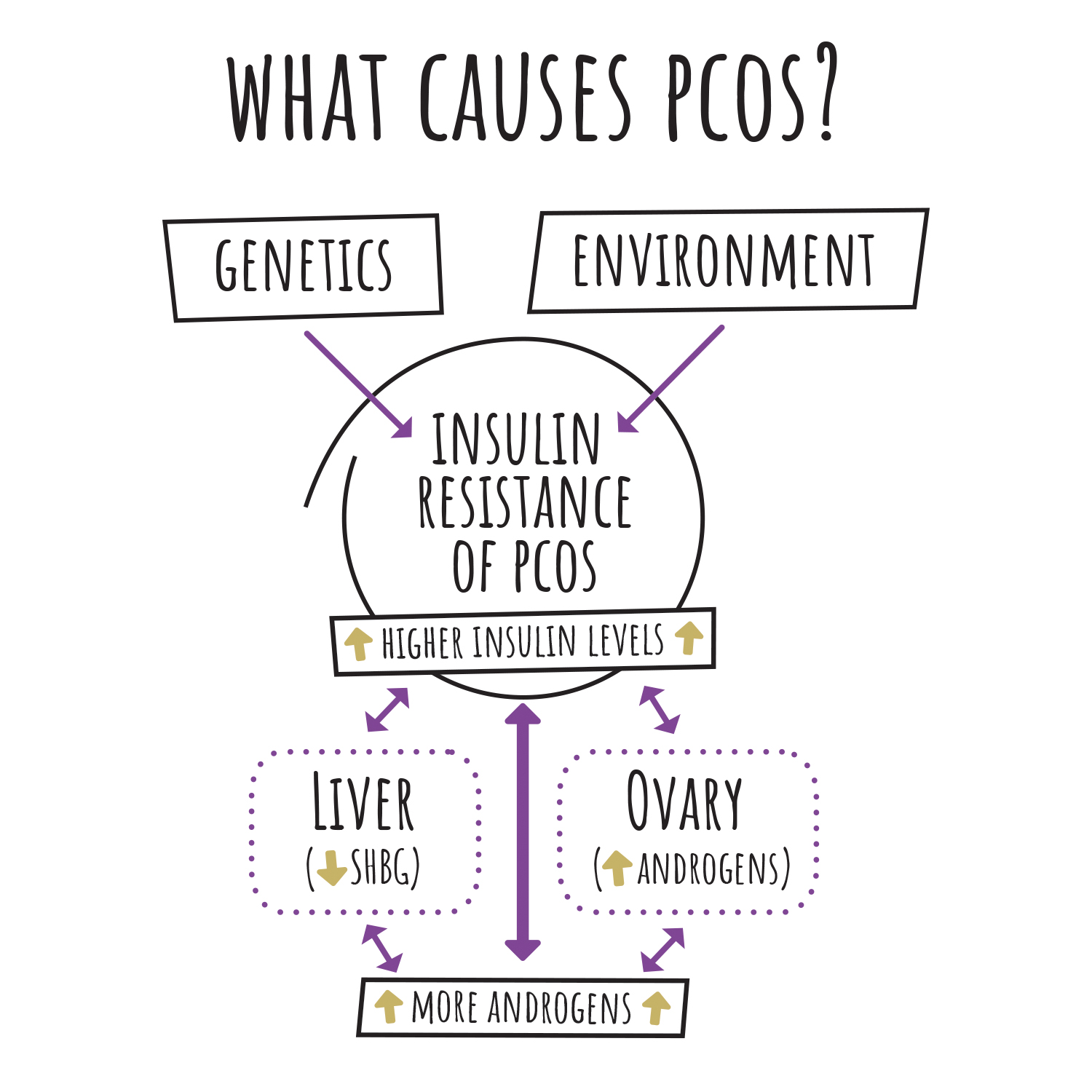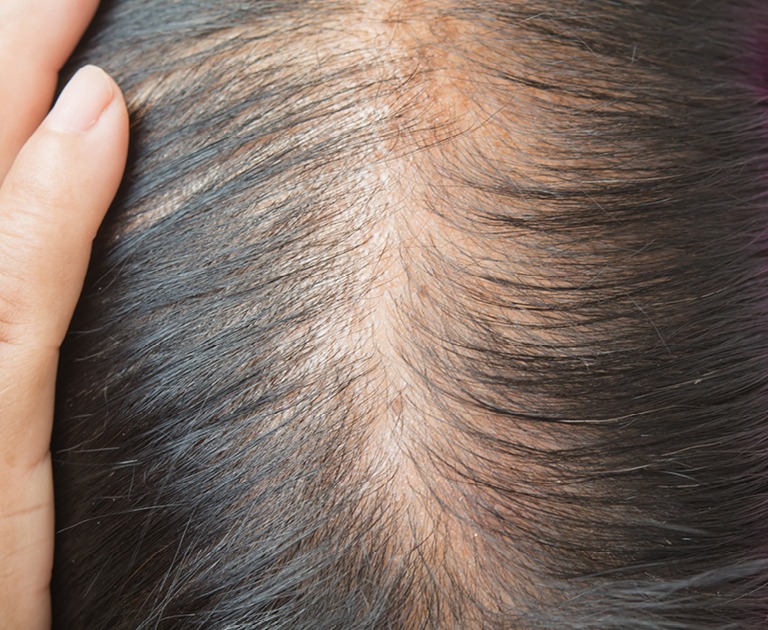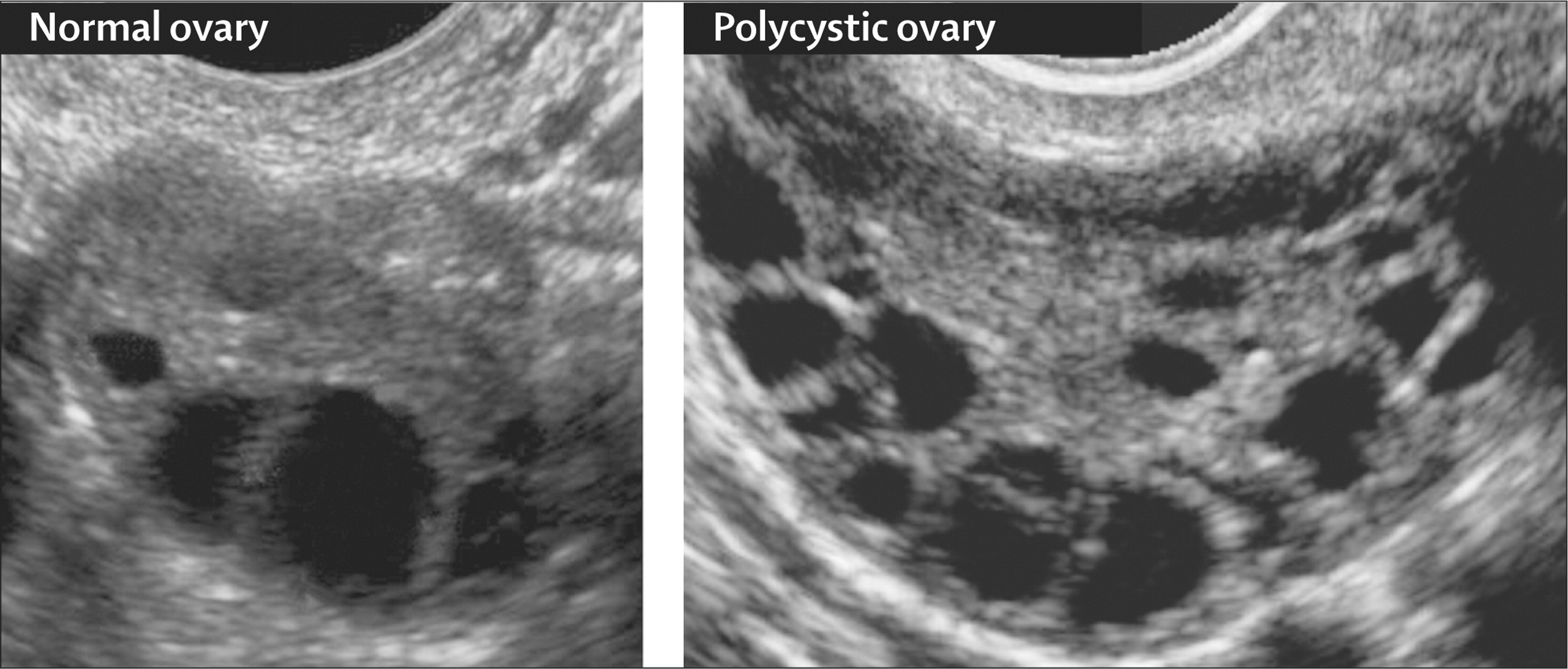Pcos & Skin
PCOS and Skin
What is PCOS – Polycystic Ovarian Disease / Syndrome?
PCOS (Polycystic Ovary Syndrome) is a common hormonal disorder that affects women, typically during their reproductive years (from late teens to early 30s). It involves an imbalance of hormones that can lead to a variety of symptoms and potential health problems. The condition is named for the presence of cysts (small fluid-filled sacs) on the ovaries, although not everyone with PCOS has cysts.


What happens in PCOS?
1. Hormonal Imbalance:
- People with PCOS often have higher levels of androgens (“male hormones,” though females also produce them in smaller amounts). This can lead to symptoms like excessive facial or body hair (hirsutism), acne, or male-pattern hair loss.

2. Irregular Menstrual Cycles:
- One of the hallmark signs of PCOS is irregular periods or even the absence of periods. People may have infrequent or prolonged menstrual cycles, making it harder to predict ovulation or become pregnant.
3. Ovarian Cysts:
- While the name suggests cysts are necessary for a diagnosis, not everyone with PCOS has them. However, many people with PCOS will have enlarged ovaries with numerous small cysts (which are follicles that didn’t develop properly or release eggs).

4. Insulin Resistance:
- Many individuals with PCOS experience insulin resistance, where the body’s cells don’t respond as effectively to insulin, leading to higher insulin levels. This can contribute to weight gain, neck and underarm pigmentation, increased hunger, and an increased risk of developing type 2 diabetes.
Symptoms of PCOS:
The symptoms of PCOS can vary greatly from person to person but commonly include:
- Irregular or missed periods
- Excessive hair growth (on the face, chest, abdomen, or back)
- Acne and oily skin
- Thinning hair or widening of hair partition line.
- Weight gain, especially around the abdomen
- Infertility or difficulty getting pregnant due to irregular ovulation
- Darkening of the skin (often around the neck, armpits, or groin)
- Fatigue or low energy
How is the diagnosis of PCOS made?
To diagnose PCOS, doctors typically rely on a combination of:
- Medical history (including symptoms such as irregular periods or weight changes)
- Physical exams (looking for signs of excess hair growth or acne)
- Blood tests to check hormone levels (including androgens and insulin)
- Ultrasound to check for ovarian cysts or signs of an enlarged ovary
Not all women with irregular cycles / multiple cysts in ovaries have PCOS. To avoid the over diagnosis of PCOS , it is best analysed with the help of a criteria designed for it, and done by an experienced gynecologist / endocrinologist.
What is the treatment for PCOS?
PCOS is a health condition that needs long term management, of which the most effective way is, lifestyle modification. Maintaining a healthy diet, exercising regularly, and losing weight (if needed) can help manage insulin resistance, regulate periods, and reduce the risk of long-term complications like heart disease and diabetes.
In addition to the above,
- Birth control pills
- Metformin: A medication that can help improve insulin sensitivity.
- Anti-androgen medications: These can reduce male-pattern hair growth and acne by blocking the effects of excess androgens.
All the above three medications play a variable role in the treatment of each individual depending on the major symptom they experience.
The skin manifestations of PCOS like the acne, acanthosis, increased hair loss respond well when these medications are added to the skin and hair treatments provided by the dermatologists. In addition, Hirsutism can be managed with laser hair reduction.
Simply trying to treat the acne, facial hair growth without establishing and addressing the underlying cause, will be in vain.
